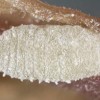 Florida Department of Agriculture and Consumer Services, Division of Plant Industry inspector Lisa Hassell collected the mealybug Phenacoccus multicerarii, a new continental record, from a retail nursery in Fernandina Beach (Nassau County, on 15 June 2011). On a return visit to the store, the mealybug was observed in high numbers on numerous host plants. Three days later, an additional find was made at a nursery in Apopka that had exchanged plant material with the nursery in Jacksonville. No further infestations were reported until October 2012, when a heavy infestation was discovered on a residential planting of coleus in Cooper City (Broward County). This mealybug was described in 2007 from a sample collected in Caracas, Venezuela, in 1949 from an unknown host (Granara de Willink and Szumik 2007). This 2-page fact sheet was written by Ian Stocks, and published by the UF Department of Entomology and Nematology, April 2013.
Florida Department of Agriculture and Consumer Services, Division of Plant Industry inspector Lisa Hassell collected the mealybug Phenacoccus multicerarii, a new continental record, from a retail nursery in Fernandina Beach (Nassau County, on 15 June 2011). On a return visit to the store, the mealybug was observed in high numbers on numerous host plants. Three days later, an additional find was made at a nursery in Apopka that had exchanged plant material with the nursery in Jacksonville. No further infestations were reported until October 2012, when a heavy infestation was discovered on a residential planting of coleus in Cooper City (Broward County). This mealybug was described in 2007 from a sample collected in Caracas, Venezuela, in 1949 from an unknown host (Granara de Willink and Szumik 2007). This 2-page fact sheet was written by Ian Stocks, and published by the UF Department of Entomology and Nematology, April 2013.
http://edis.ifas.ufl.edu/in993
Category: Agriculture
Wildland Weeds: Paragrass, Urochloa mutica (SSAGR370/AG375)
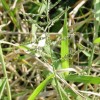 Paragrass (also referred to as Californiagrass) is thought to have been introduced into Florida sometime in the late 1870s as a forage plant. The semiaquatic grass is a native of tropical Africa, and today it is established in both hemispheres in tropical and subtropical regions as a highly palatable fodder. The grass is established in regions of poorly drained soils and along freshwater shorelines in Alabama, Florida, Hawaii, Maryland, Oregon, South Carolina, and Texas. It is an extremely aggressive competitor that can displace many shoreline emergent plants and plants in cultivated or disturbed sites associated with moist soil. Paragrass becomes readily established in wet soils along shorelines where it can form large monocultures. This 4-page fact sheet was written by L. T. Markle, B. A. Sellers, and W. A. Overholt, and published by the UF Department of Agronomy, April 2013.
Paragrass (also referred to as Californiagrass) is thought to have been introduced into Florida sometime in the late 1870s as a forage plant. The semiaquatic grass is a native of tropical Africa, and today it is established in both hemispheres in tropical and subtropical regions as a highly palatable fodder. The grass is established in regions of poorly drained soils and along freshwater shorelines in Alabama, Florida, Hawaii, Maryland, Oregon, South Carolina, and Texas. It is an extremely aggressive competitor that can displace many shoreline emergent plants and plants in cultivated or disturbed sites associated with moist soil. Paragrass becomes readily established in wet soils along shorelines where it can form large monocultures. This 4-page fact sheet was written by L. T. Markle, B. A. Sellers, and W. A. Overholt, and published by the UF Department of Agronomy, April 2013.
http://edis.ifas.ufl.edu/ag375
Sintomas de Cancro Citrico en Arboles de Vivero (PP307)
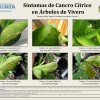 This is a two-page illustrated identification sheet for citrus canker symptoms that appear in citrus nurseries. Written by Timothy D. Riley, Megan M. Dewdney, and Jamie D. Burrow, and published by the UF Department of Plant Pathology, May 2013.
This is a two-page illustrated identification sheet for citrus canker symptoms that appear in citrus nurseries. Written by Timothy D. Riley, Megan M. Dewdney, and Jamie D. Burrow, and published by the UF Department of Plant Pathology, May 2013.
http://edis.ifas.ufl.edu/pp307
Pesticide Options for Insect, Mite, and Mollusk Management in Commercial Strawberry Production in Florida (ENY689/IN486)
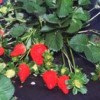 Effective management of arthropod and gastropod pests of strawberry is critical to the profitability of the industry and requires that pests be detected in a timely manner through systematic scouting. Appropriate control measures should be applied as conditions warrant. The tables in this 22-page fact sheet list pesticides that are presently available to commercial strawberry producers in Florida and are organized alphabetically by major pest groups. Written by James F. Price, Curtis Nagle, and Susan E. Webb, and published by the UF Department of Entomology and Nematology, April 2013.
Effective management of arthropod and gastropod pests of strawberry is critical to the profitability of the industry and requires that pests be detected in a timely manner through systematic scouting. Appropriate control measures should be applied as conditions warrant. The tables in this 22-page fact sheet list pesticides that are presently available to commercial strawberry producers in Florida and are organized alphabetically by major pest groups. Written by James F. Price, Curtis Nagle, and Susan E. Webb, and published by the UF Department of Entomology and Nematology, April 2013.
http://edis.ifas.ufl.edu/in486
Cypress looper Anacamptodes pergracilis (Hulst) (Insecta: Lepidoptera: Geometridae) (EENY303/IN986)
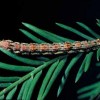 Anacamptodes pergracilis (Hulst), commonly known as the cypress looper, drew considerable attention in late summer of 1980 with the unexpected defoliation of nearly 28,000 ha of cypress trees in USFS-NPS Big Cypress National Preserve (Collier and Monroe counties). Currently, cypress looper populations are at low levels, even in the Fisheating Creek (Glades County) area, a perennial generator of significant cypress looper defoliation over the past 20 years. This 3-page fact sheet was written by Wayne N. Dixon, and published by the UF Department of Entomology and Nematology, April 2013.
Anacamptodes pergracilis (Hulst), commonly known as the cypress looper, drew considerable attention in late summer of 1980 with the unexpected defoliation of nearly 28,000 ha of cypress trees in USFS-NPS Big Cypress National Preserve (Collier and Monroe counties). Currently, cypress looper populations are at low levels, even in the Fisheating Creek (Glades County) area, a perennial generator of significant cypress looper defoliation over the past 20 years. This 3-page fact sheet was written by Wayne N. Dixon, and published by the UF Department of Entomology and Nematology, April 2013.
http://edis.ifas.ufl.edu/in986
Growing Potatoes in the Florida Home Garden (HS993/HS183)
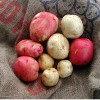 The Irish potato is a cool-season crop. A recently grown and harvested potato exhibits different flavor profiles from one that has been in storage or on a grocery shelf for an extended period. For example, in storage, the starches in potatoes convert to sugars, resulting in a less desirable texture and taste. “New” potato flavor can be achieved in the home garden by following a few growing recommendations. This 9-page fact sheet was written by Christian T. Christensen, Libby R. Rens, Jeffrey E. Pack, Lincoln Zotarelli, Chad Hutchinson, Wendy Dahl, Doug Gergela, and James M. White, and published by the UF Department of Horticultural Sciences, April 2013.
The Irish potato is a cool-season crop. A recently grown and harvested potato exhibits different flavor profiles from one that has been in storage or on a grocery shelf for an extended period. For example, in storage, the starches in potatoes convert to sugars, resulting in a less desirable texture and taste. “New” potato flavor can be achieved in the home garden by following a few growing recommendations. This 9-page fact sheet was written by Christian T. Christensen, Libby R. Rens, Jeffrey E. Pack, Lincoln Zotarelli, Chad Hutchinson, Wendy Dahl, Doug Gergela, and James M. White, and published by the UF Department of Horticultural Sciences, April 2013.
http://edis.ifas.ufl.edu/hs183
Water Quality and the Effectiveness of Pesticides (PI245)
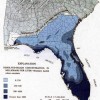 Pesticide applicators do not usually blame the mix for a pest control failure. Rather, the applicator will check if the correct pesticide was chosen for the job, if the pest was misidentified, if application equipment was properly calibrated, or if there was pesticide resistance. However, pesticide applicators should be aware that water quality can play a role in the efficacy of a pesticide treatment. Some pesticides lose their effectiveness when mixed with water that contains suspended or dissolved solids. This publication discusses how water quality affects pesticide mixes. This 2-page fact sheet was written by F. M. Fishel, and published by the UF Department of Agronomy, April 2013.
Pesticide applicators do not usually blame the mix for a pest control failure. Rather, the applicator will check if the correct pesticide was chosen for the job, if the pest was misidentified, if application equipment was properly calibrated, or if there was pesticide resistance. However, pesticide applicators should be aware that water quality can play a role in the efficacy of a pesticide treatment. Some pesticides lose their effectiveness when mixed with water that contains suspended or dissolved solids. This publication discusses how water quality affects pesticide mixes. This 2-page fact sheet was written by F. M. Fishel, and published by the UF Department of Agronomy, April 2013.
http://edis.ifas.ufl.edu/pi245
Cattle Grub Management (ENY290/IN979)
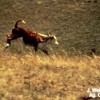 Immature warble flies, or cattle grubs, infest and harm livestock throughout the world. Warble flies also are known as “heel flies” because they cause cattle to kick at themselves, and “gad flies” because they cause cattle to “gad about” in an attempt to evade the flies. Two species of cattle grubs occur in the U.S.A., the common cattle grub, and the northern cattle grub. This 6-page fact sheet was written by P. E. Kaufman and E. N. I. Weeks, and published by the UF Department of Entomology and Nematology, March 2013.
Immature warble flies, or cattle grubs, infest and harm livestock throughout the world. Warble flies also are known as “heel flies” because they cause cattle to kick at themselves, and “gad flies” because they cause cattle to “gad about” in an attempt to evade the flies. Two species of cattle grubs occur in the U.S.A., the common cattle grub, and the northern cattle grub. This 6-page fact sheet was written by P. E. Kaufman and E. N. I. Weeks, and published by the UF Department of Entomology and Nematology, March 2013.
http://edis.ifas.ufl.edu/in979
Cornsilk Fly (suggested common name), Euxesta stigmatias Loew (Insecta: Diptera: Otitidae) (EENY224/IN381)
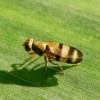 ‘Cornsilk flies’ are attractive, medium to dark metallic green to black colored flies with distinctive wing patterns and wing flapping behavior. They are commonly found throughout Florida’s agricultural communities. Their normally saprophytic life style belies their destructive nature when it comes to their preference for sweet corn ears. Four species of ‘cornsilk flies’ are known to attack corn in Florida: Chaetopsis massyla (Walker), Euxesta annonae (Fabricius), Euxesta eluta Loew, and Euxesta stigmatias Loew. This 8-page fact sheet was written by Gregg S. Nuessly and John L. Capinera, and published by the UF Department of Entomology and Nematology, April 2013. #UFBugs
‘Cornsilk flies’ are attractive, medium to dark metallic green to black colored flies with distinctive wing patterns and wing flapping behavior. They are commonly found throughout Florida’s agricultural communities. Their normally saprophytic life style belies their destructive nature when it comes to their preference for sweet corn ears. Four species of ‘cornsilk flies’ are known to attack corn in Florida: Chaetopsis massyla (Walker), Euxesta annonae (Fabricius), Euxesta eluta Loew, and Euxesta stigmatias Loew. This 8-page fact sheet was written by Gregg S. Nuessly and John L. Capinera, and published by the UF Department of Entomology and Nematology, April 2013. #UFBugs
http://edis.ifas.ufl.edu/in381
Pest Management Perceptions and Practices for Equine Farms in North and Central Florida (ENY2028/IN983)
 Equine facilities have unique pest management problems due to facility structure and horse husbandry practices. In Florida, homes on small equine farms are generally located in close proximity to pastures, stalls or run-in sheds, manure piles, and other fly breeding habitats. So homeowners have a high risk of exposure to pathogens that can be transmitted by filth flies to humans. Integrated pest management for equine farms requires accurate diagnosis of pest problems and the coordinated use of science-based management practices, but a recent survey shows that many equine property owners don’t know enough about the identification, biology, and presence of filth fly pests on their properties to develop successful IPM programs. This 7-page fact sheet was written by Erika T. Machtinger, Norman C. Leppla, and Cindy Saunders, and published by the UF Department of Entomology and Nematology, March 2013.
Equine facilities have unique pest management problems due to facility structure and horse husbandry practices. In Florida, homes on small equine farms are generally located in close proximity to pastures, stalls or run-in sheds, manure piles, and other fly breeding habitats. So homeowners have a high risk of exposure to pathogens that can be transmitted by filth flies to humans. Integrated pest management for equine farms requires accurate diagnosis of pest problems and the coordinated use of science-based management practices, but a recent survey shows that many equine property owners don’t know enough about the identification, biology, and presence of filth fly pests on their properties to develop successful IPM programs. This 7-page fact sheet was written by Erika T. Machtinger, Norman C. Leppla, and Cindy Saunders, and published by the UF Department of Entomology and Nematology, March 2013.
http://edis.ifas.ufl.edu/in983
Nursery Irrigation System Checklist (ENH1208/EP469)
 Irrigation must be intensively managed to achieve optimal production times for plants of superior quality. There must be a balance between excessive and inadequate irrigation. Producers use irrigation control devices and past experience to achieve the balance. A few simple checks before and during irrigation can make a big difference in efficient and uniform delivery of the appropriate amount of water. This 4-page fact sheet was written by Tom Yeager, and published by the UF Department of Environmental Horticulture, April 2013.
Irrigation must be intensively managed to achieve optimal production times for plants of superior quality. There must be a balance between excessive and inadequate irrigation. Producers use irrigation control devices and past experience to achieve the balance. A few simple checks before and during irrigation can make a big difference in efficient and uniform delivery of the appropriate amount of water. This 4-page fact sheet was written by Tom Yeager, and published by the UF Department of Environmental Horticulture, April 2013.
http://edis.ifas.ufl.edu/ep469
Mealybug Vryburgia trionymoides (DeLotto) (Pseudococcidae) (EENY553/IN991)
 On several occasions in 2011, succulents for sale at retail stores in Florida were found with infestations of the mealybug Vryburgia trionymoides DeLotto. A traceback revealed that the succulents originated in California, where this mealybug is known as an occasional greenhouse pest. Specimens intercepted or found in retail stores often were well-hidden in the axillary region near the stem, making detection more challenging. An untreated infestation can kill a plant, there are no published reports of economic losses caused by this species. This 2-page fact sheet was written by Ian Stocks, and published by the UF Department of Entomology and Nematology, April 2013.
On several occasions in 2011, succulents for sale at retail stores in Florida were found with infestations of the mealybug Vryburgia trionymoides DeLotto. A traceback revealed that the succulents originated in California, where this mealybug is known as an occasional greenhouse pest. Specimens intercepted or found in retail stores often were well-hidden in the axillary region near the stem, making detection more challenging. An untreated infestation can kill a plant, there are no published reports of economic losses caused by this species. This 2-page fact sheet was written by Ian Stocks, and published by the UF Department of Entomology and Nematology, April 2013.
http://edis.ifas.ufl.edu/in991
Tuttle mealybug Brevennia rehi (Pseudococcidae) (EENY551/IN989)
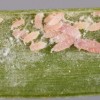 The Tuttle mealybug, Brevennia rehi (Lindinger), is a pest of many grass species and occurs nearly worldwide, especially where rice and sugarcane are grown. Because Bermuda and zoysia are important lawn grasses, especially in the southern United States, infestation by Tuttle mealybug should be considered whenever dieback is noticed, especially if the grass blades show white wax or are sticky from honeydew secretion. Both Bermuda and zoysia lawns are commonly installed as sod or plugs, which provide a ready route for the spread of infestations should the pest control practices of the grower fail to maintain a pest-free production environment. This 3-page fact sheet was written by Ian Stocks, and published by the UF Department of Entomology and Nematology, April 2013.
The Tuttle mealybug, Brevennia rehi (Lindinger), is a pest of many grass species and occurs nearly worldwide, especially where rice and sugarcane are grown. Because Bermuda and zoysia are important lawn grasses, especially in the southern United States, infestation by Tuttle mealybug should be considered whenever dieback is noticed, especially if the grass blades show white wax or are sticky from honeydew secretion. Both Bermuda and zoysia lawns are commonly installed as sod or plugs, which provide a ready route for the spread of infestations should the pest control practices of the grower fail to maintain a pest-free production environment. This 3-page fact sheet was written by Ian Stocks, and published by the UF Department of Entomology and Nematology, April 2013.
http://edis.ifas.ufl.edu/in989
Valuing the Ecosystem Services of Florida‹s Forest Conservation Programs: The Economic Benefits of Protecting Water Quality (FOR309/FR377)
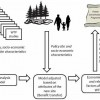 How much are Floridians willing to pay for water quality protection programs that include forest conservation? This 9-page fact sheet reports the results of a study to answer this question, using a benefit transfer approach. Written by Melissa M. Kreye, Francisco J. Escobedo, Damian C. Adams, Taylor Stein, and Tatiana Borisova, and published by the UF Department of School of Forest Resources and Conservation, April 2013.
How much are Floridians willing to pay for water quality protection programs that include forest conservation? This 9-page fact sheet reports the results of a study to answer this question, using a benefit transfer approach. Written by Melissa M. Kreye, Francisco J. Escobedo, Damian C. Adams, Taylor Stein, and Tatiana Borisova, and published by the UF Department of School of Forest Resources and Conservation, April 2013.
http://edis.ifas.ufl.edu/fr377
Common Woody Plants of Florida Scrub Ecosystems (FOR305/FR373)
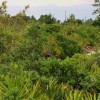 The purpose of this fact sheet is to help identify a few of the more common woody plant species found in Florida’s scrub ecosystems. In the individual plant descriptions, words that appear in bold font are considered to be key field characteristics that will aid in identification of the species. This 14-page fact sheet was written by Lynn Proenza and Michael Andreu, and published by the UF Department of School of Forest Resources and Conservation, October 2012.
The purpose of this fact sheet is to help identify a few of the more common woody plant species found in Florida’s scrub ecosystems. In the individual plant descriptions, words that appear in bold font are considered to be key field characteristics that will aid in identification of the species. This 14-page fact sheet was written by Lynn Proenza and Michael Andreu, and published by the UF Department of School of Forest Resources and Conservation, October 2012.
http://edis.ifas.ufl.edu/fr373
Citrus peelminer Marmara gulosa Guillèn and Davis (Insecta: Lepidoptera: Gracillariidae) (EENY415/IN985)
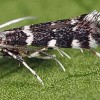 The citrus peelminer is a dark-gray moth with mottled white and brown markings and about 4 mm in length. This moth is considered native in the United States, attacking willow. It is believed that a host-shift occurred to multiple non-native plants including all varieties of citrus and cerain ornamentals, such as oleander. Citrus peelminer has been reported to occur in low numbers in Florida and at least three Marmara species have been identified in the state. Recent evaluations of an experimental pheromone lure that is still under development by researchers at the University of California, Riverside have confirmed captures of citrus peelminer (Marmara sp.) in Polk County, Florida. This 3-page fact sheet was written by Lukasz L. Stelinski, and published by the UF Department of Entomology and Nematology, April 2013.
The citrus peelminer is a dark-gray moth with mottled white and brown markings and about 4 mm in length. This moth is considered native in the United States, attacking willow. It is believed that a host-shift occurred to multiple non-native plants including all varieties of citrus and cerain ornamentals, such as oleander. Citrus peelminer has been reported to occur in low numbers in Florida and at least three Marmara species have been identified in the state. Recent evaluations of an experimental pheromone lure that is still under development by researchers at the University of California, Riverside have confirmed captures of citrus peelminer (Marmara sp.) in Polk County, Florida. This 3-page fact sheet was written by Lukasz L. Stelinski, and published by the UF Department of Entomology and Nematology, April 2013.
http://edis.ifas.ufl.edu/in985
Key to Nine Common Smilax Species of Florida (FOR307/FR375)
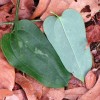 Identifying species found in Smilax the genus can be difficult because species resemble one another closely. One must be careful to use detailed descriptions in order to correctly identify a specimen. Smilax species are important because they can provide shelter and food for wildlife and have provided humans with medicine, food, and dyes. Twelve Smilax species are found in Florida. This 8-page fact sheet covers the nine more common species that one may encounter in the state. Written by Lynn Proenza and Michael Andreu, and published by the UF Department of School of Forest Resources and Conservation, January 2013.
Identifying species found in Smilax the genus can be difficult because species resemble one another closely. One must be careful to use detailed descriptions in order to correctly identify a specimen. Smilax species are important because they can provide shelter and food for wildlife and have provided humans with medicine, food, and dyes. Twelve Smilax species are found in Florida. This 8-page fact sheet covers the nine more common species that one may encounter in the state. Written by Lynn Proenza and Michael Andreu, and published by the UF Department of School of Forest Resources and Conservation, January 2013.
http://edis.ifas.ufl.edu/fr375
The EPA Conventional Reduced Risk Pesticide Program (PI224)
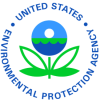 The Food Quality Protection Act (FQPA) of 1996 initiated the U.S. Environmental Protection Agency’s (EPA) Conventional Reduced Risk Pesticide Program. Its purpose is to expedite the review and registration process of conventional pesticides that pose less risk to human health and the environment than existing conventional alternatives. Riskier conventional alternatives are those pesticides EPA deems as having neurotoxic, carcinogenic, reproductive, and developmental toxicity, or groundwater contamination effects. It serves as a means to ensure that reduced risk pesticides enter the channels of trade and are available to growers as soon as possible. This 11-page fact sheet was written by F.M. Fishel, and published by the UF Department of Agronomy, April 2013.
The Food Quality Protection Act (FQPA) of 1996 initiated the U.S. Environmental Protection Agency’s (EPA) Conventional Reduced Risk Pesticide Program. Its purpose is to expedite the review and registration process of conventional pesticides that pose less risk to human health and the environment than existing conventional alternatives. Riskier conventional alternatives are those pesticides EPA deems as having neurotoxic, carcinogenic, reproductive, and developmental toxicity, or groundwater contamination effects. It serves as a means to ensure that reduced risk pesticides enter the channels of trade and are available to growers as soon as possible. This 11-page fact sheet was written by F.M. Fishel, and published by the UF Department of Agronomy, April 2013.
http://edis.ifas.ufl.edu/pi224
Florida Crop/Pest Management Profile: Cabbage (CIR1256/PI042)
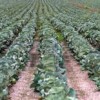 Florida’s cabbage production is exclusively for the fresh market. The higher-quality cabbage obtained during the late fall, winter, and early spring months in Florida allows the shipment of fresh cabbage to areas of the United States that cannot produce cabbage during that part of the year. This 18-page fact sheet summarizes production practices and pest management for cabbage production in Florida. Written by Wael M. Elwakil and Mark Mossler, and published by the UF Department of Agronomy, April 2013.
Florida’s cabbage production is exclusively for the fresh market. The higher-quality cabbage obtained during the late fall, winter, and early spring months in Florida allows the shipment of fresh cabbage to areas of the United States that cannot produce cabbage during that part of the year. This 18-page fact sheet summarizes production practices and pest management for cabbage production in Florida. Written by Wael M. Elwakil and Mark Mossler, and published by the UF Department of Agronomy, April 2013.
http://edis.ifas.ufl.edu/pi042
Produccion de Hortalizas en Ambientes Protegidos: Medios de Siembra y Contenedores (HS1216)
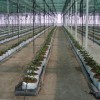 Este documento contiene informacion sobre producción en suelos: Desinfección, mejoramiento, cultivos de cobertura, acolchados (mulches); y tipos de contenedores. This 6-page fact sheet was written by Bielinski M. Santos and Henner A. Obregon-Olivas, and published by the UF Department of Horticultural Sciences, March 2013.
Este documento contiene informacion sobre producción en suelos: Desinfección, mejoramiento, cultivos de cobertura, acolchados (mulches); y tipos de contenedores. This 6-page fact sheet was written by Bielinski M. Santos and Henner A. Obregon-Olivas, and published by the UF Department of Horticultural Sciences, March 2013.
http://edis.ifas.ufl.edu/hs1216